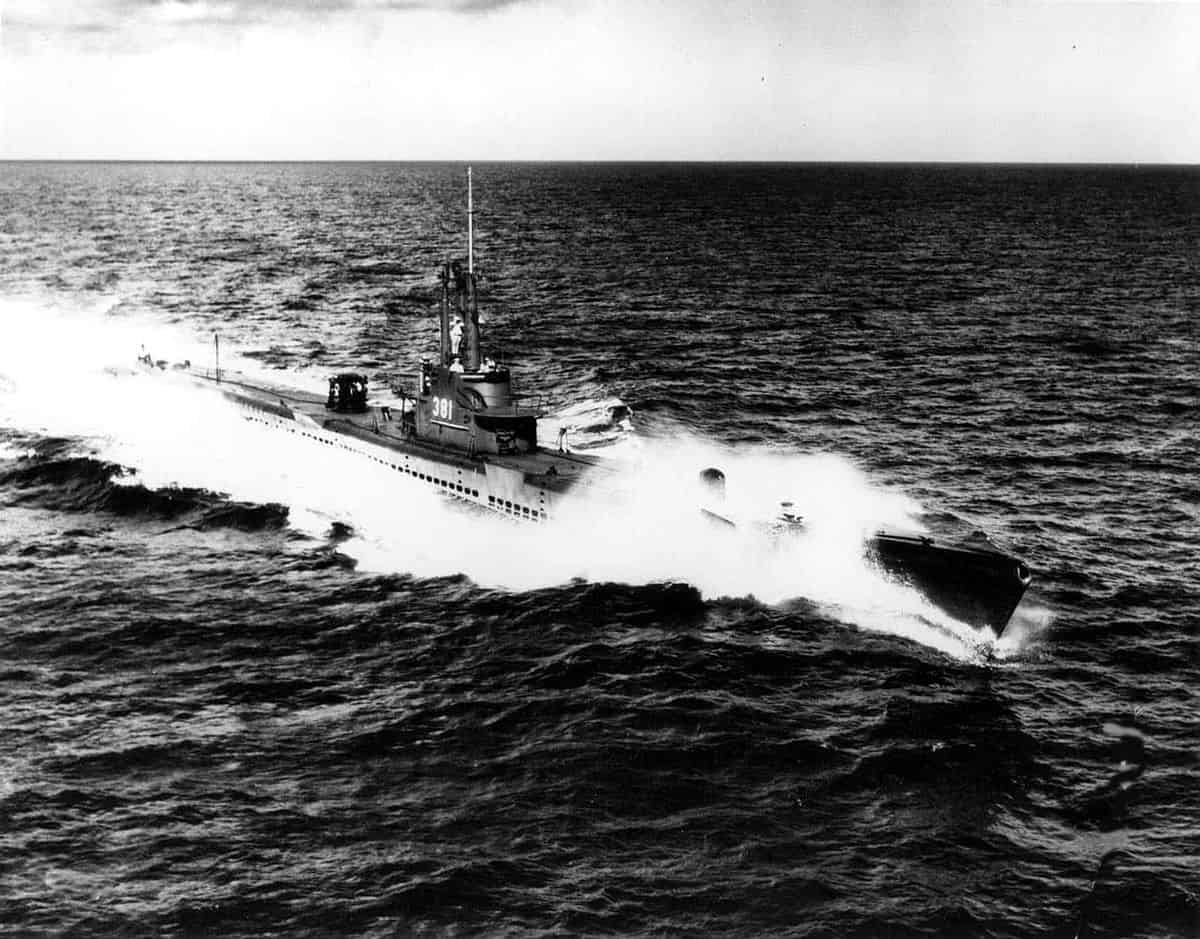
The U.S. Sand Lance. For background, click on this link. Click on the photo to enlarge.
By Phil Kohn. Dedicated to the memory of his father, GM3 Walter Kohn, U.S. Navy Armed Guard, USNR, and all men and women who have answered the country’s call in time of need. Phil can be contacted at ww2remembered@yahoo.com.
In Dublin, the government of the neutral Republic of Ireland on March 10, 1944, refuses a U.S. request that it expel all Axis diplomats. (The U.S. and the U.K. are concerned that spies will transmit information on Allied preparations in England for the upcoming “Operation Overlord” (the invasion of Europe) to Germany via neutral Ireland.) The Kriegsmarine loses four of its U-boats — U-343, U-450, U-625 and U-845 — to enemy action on this day alone. The Red Army captures Uman, in central Ukraine, midway between Kiev and Odessa.
As of March 11, some 12,000 Chindits are behind Japanese lines in Burma, disrupting the communications of Japanese forces facing Lt. Gen. Joseph “Vinegar Joe” Stilwell’s Sino-American troops. Field Marshal Ernst Busch, commander of German Army Group Centre, and his staff are summoned to Hitler’s Berghof, in Obersalzburg, Austria, to brief the German leader on the status of the war on the Eastern Front. One of Busch’s aides, Capt. Eberhard von Breitenbuch, conceals a pistol in his uniform with which he intends to assassinate der Führer. Upon arrival at the Berghof, Breitenbuch is prevented from entering the meeting room by SS guards, whose orders have been changed just that morning: Only senior officers will meet with Hitler; aides will not be permitted. Thus, the plan goes unfulfilled and Breitenbuch goes on his way, undetected.
British forces take Buthidaung, north of Aykab, in coastal Arakan, Burma, on March 12. On Bougainville, Japanese attacks continue, but the American defense holds. U.S. troops occupy Wotje Atoll, in the Marshall Islands, without resistance.
On the Eastern Front, the Soviet 3rd Ukrainian Front, under Col. Gen. Rodion Malinovsky, captures Kherson, in southern Ukraine, on March 13. In the Pacific, American submarine USS Sand Lance fires six torpedoes into a Japanese convoy headed for the Mariana Islands. The torpedoes sink the light cruiser Tatsuta and the merchant vessel Kokuyo Maru, which is carrying 1,000 troops, and damages one of the other merchant vessels. In Moscow, the Soviet Union officially recognizes the Badoglio government in Italy.
On March 14, troops of British Lt. Gen. William Slim’s Fourteenth Indian Army in northern Burma are under attack by the 31st Infantry Division of the Japanese Fifteenth Army. They are forced to withdraw toward Imphal — a major supply center in the Indian state of Manipur, in the northeastern part of the country — while engaging in a bitter fighting retreat. In Ukraine, German forces are cut off by Soviet troops north of Kherson. Eventually, some 10,000 Germans are killed and about 4,000 taken prisoner.
In Italy, the third Battle of Monte Cassino begins on March 15. The Allies drop 992 tons of bombs on the abbey ruins and fire 952,000 rounds of artillery to try to dislodge the Germans. British, Indian and New Zealand troops try to storm what’s left of the monastery, but they are pushed back. In the Pacific, U.S. troops capture Manus Island in the Admiralty chain. In Wellington, New Zealand, the U.S. Navy sailing vessel USS Echo — a two-masted scow (a flat-bottomed schooner) — is decommissioned and returned to the New Zealand government. The borrowed vessel had spent two years of service meandering through the Solomon and New Hebrides island groups delivering supplies to the U.S. Army. (The vessel and her only commander, U.S. Navy Lt. (j.g.) Meredith “Rip” Riddle, are the inspiration for the 1960 film and the 1965 TV series: “The Wackiest Ship in the Army.”)
Acting Maj. Gen. Orde Wingate’s Chindits (officially the 77th Indian Brigade) on March 16 sever communications and create havoc behind Japanese lines near Bongyaung and Inywa, along the Irawaddy River in northern Burma. Pierre Pucheu, Vichy French Minister of the Interior, is captured in Casablanca, Morocco, and imprisoned for collaborating with the Nazis. He is subsequently tried by the Free French and convicted of treason and is executed by firing squad on March 22.


